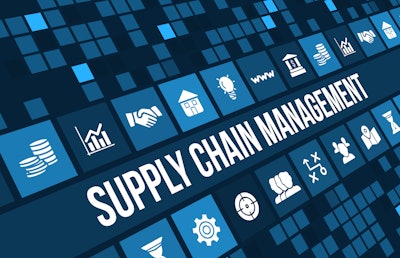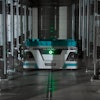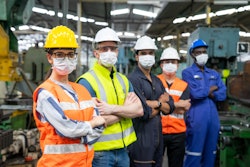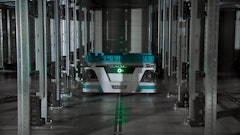
Although East Coast dock workers and Boeing machinists reached deals to end their respective strikes, more interruptions over the role of automation in supply chain and manufacturing jobs are likely on the horizon. The number of work stoppages and employees involved has consistently increased each year since 2021.
In addition to concerns over wages and staffing, many workers are now worried about the use of AI and other technology, which is often perceived as a threat to jobs. Supply chain leaders must consequently navigate the delicate balance between maintaining employee trust and implementing technology that will allow their company to remain competitive.
While emerging technologies will transform the way supply chains operate in the next decade, the amount of uncertainty that exists around everything from how those technologies will be implemented to what they mean for the workforce is taking its toll on the industry. Strikes are just the most visible example. Fortunately, there are several strategies leaders can adopt to ensure that workers remain satisfied and productive, while preparing them for the next step in the evolution of supply chains.
Prioritize transparency and communicate strategically
While nobody believes that transparency is bad, very few leaders practice it because they are worried about the anxiety it will cause. The reasoning often goes, “If we tell employees that we have to cut costs or make changes, they will be too worried to work productively or they will walk off the job.” This reaction is a possibility, but when done right in most cases, employees appreciate the clarity and the sense of being informed earns goodwill. It is also true that in most cases not being transparent doesn’t stop incomplete information getting out and the rumors create more anxiety than the truth would have.
This transparency is not only for when leaders know the precise changes. Even when there is uncertainty saying something along the lines of, “We have to cut costs, but we do not know exactly which ones yet,” gives employees a sense of what is happening while also remaining honest about what still needs to be determined. Just be sure to provide updates as decisions are made so everyone feels like they are being brought along on the journey.
Especially after any work interruptions, equipping managers with the mindset and messaging to address what happened is important. These moments are clearly charged with emotion and managers need support - some shared language that encourages forward movement and guidance on how to respond to potentially difficult comments. Managers will have a big role to play in helping employees resume work in a way that acknowledges their experience while getting the company back on track.
Build technical and adaptability skills
It is no secret that machines are increasingly capable of handling many supply chain functions, but this does not mean that current employees will be displaced over the next decade or two. Helping workers develop the technical skills needed to use AI and other automated tools will be the key to preparing your workforce for the future and reassuring them that they play an important role in the company. When rolling out this kind of training programs, be sure to communicate exactly how it will benefit participants and encourage hands-on learning, so the lessons translate into new behaviors.
As uncertainty increases, leaders should also focus on providing an opportunity to build “change muscles” or adaptability skills. Learning how to navigate change and pivot quickly will put employees in the right mindset to adapt to new workplace demands and role shifts. By giving them the tools needed to lead through uncertainty and reasons to embrace change, there will be less need for reactive, disruptive actions when something is not working or needs improvement.
Listen and learn from employees at every level
The best ideas and solutions often come from frontline workers who experience the impact of decisions the most but rarely have the opportunity to provide input or feedback on them. Employees who are encouraged and empowered to share their ideas without fear of being shut down are more likely to feel like they are a valuable part of the company. Leaders need to establish mechanisms and processes that allow managers to not only collect ideas but also act on them. When workers know that their suggestions count and can see at least some of them being implemented, it can go a long way to creating a culture of collaboration, mutual respect, and trust. Listening and pushing decision making away from the center is important in building an engaged workforce. The more people feel like they are heard, the more they feel a sense of belonging.
Supply chains have taken a heavy hit since 2020 and recent strikes have only exacerbated ongoing challenges. Unfortunately, this degree of uncertainty is unlikely to recede, and leaders will need to operate effectively in an unpredictable context. Knowing how to navigate it while keeping workers engaged and equipping them with the right skills will be critical to maintaining productivity and your competitive edge.














![Pros To Know 2026 [color]](https://img.sdcexec.com/mindful/acbm/workspaces/default/uploads/2025/08/prostoknow-2026-color.mduFvhpgMk.png?ar=16%3A9&auto=format%2Ccompress&bg=fff&fill-color=fff&fit=fill&h=135&q=70&w=240)




